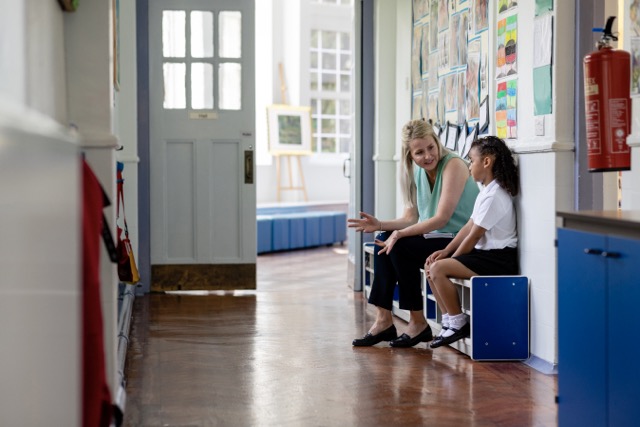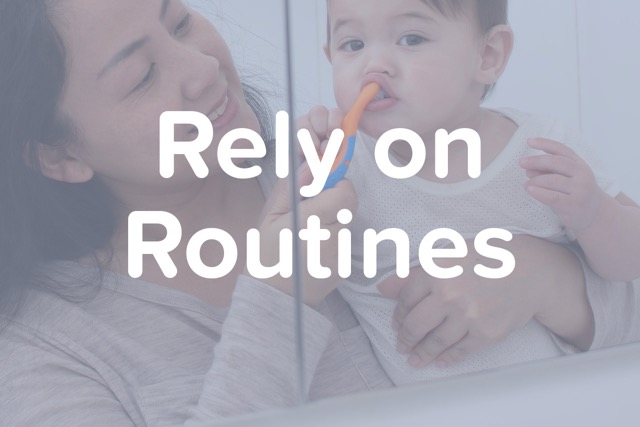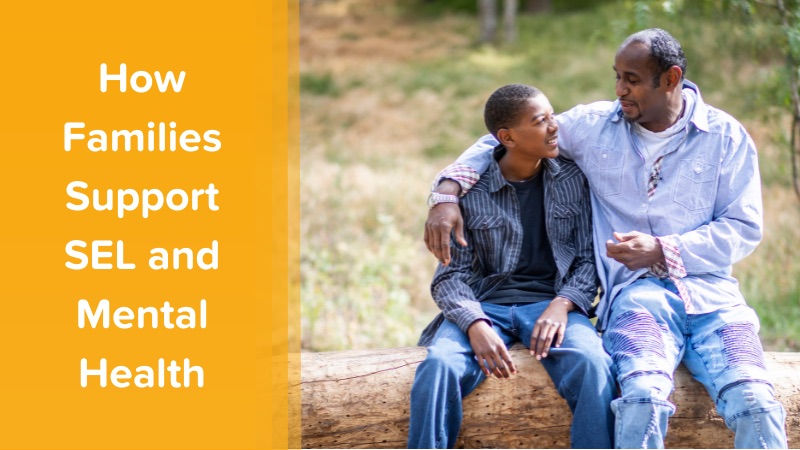By Megan Okrand, contributing writer
Understanding the landscape: mental health challenges in K-12 Schools
Growing up, my family road trips were synonymous with the sound of Leonard Cohen’s greatest hits echoing through the car speakers. At the time, I’d protest vehemently, urging my parents to switch to my preferred playlist — Britney Spears was more my jam. Little did I know that Cohen’s lyrics would resurface in my life, guiding me to a profound realization while working as a teacher.
During my career as an educator, I encountered a student grappling with a life-altering event that significantly impacted their mental health. A vibrant, talkative soul had transformed into someone quiet and reserved. Concerned, I approached them to ask if they were okay. Their response, “I have no choice but to be okay,” stayed in my mind.

In that pivotal moment, Leonard Cohen’s lyrics echoed: “There is a crack in everything, that’s how the light gets in.” Suddenly, the significance of those road trip melodies became clear (beyond realizing that my parents had better taste in music than I gave them credit for). It dawned on me that addressing the stigma of mental health in schools was imperative and that acknowledging the cracks in our understanding of mental health allows the light of awareness and compassion to illuminate these vital conversations.
I shared with the student that it’s okay not to be okay. However, I also realized that mere acknowledgment was insufficient; their mental health needed to be a priority across all facets of the school system.
As it turns out, my student wasn’t alone in their struggle. The mental health landscape within K-12 schools is a growing concern. Mental health difficulties among students are on the rise, with the prevalence of challenges such as anxiety, depression, and emotional distress becoming more pronounced. According to the Centers for Disease Control and Prevention, more than 40% of high school students report feeling so sad or hopeless that they cannot engage in regular activities for at least two weeks during the year.
Yet, an even more significant barrier to their well-being is the pervasive stigma that shrouds mental health in schools. Opening up about these issues is challenging due to their vulnerability, potentially leaving students feeling isolated and unsupported. It’s time for a paradigm shift to create a space where every student feels heard, understood, and valued.
Involving families and the community in student mental health support
Social emotional learning (SEL) programs emerge as a beacon of hope, offering a holistic approach to address not just academic but also emotional needs. By addressing emotional learning and fostering positive relationship skills, SEL programs become a way of supporting student mental health, helping them navigate the intricacies of their own well-being.
Decades of research affirm the positive impact of social-emotional learning across various educational levels.

A 2011 meta-analysis, encompassing 213 school-based SEL programs and over 270,000 students, revealed widespread benefits, including improved classroom behavior, enhanced standardized test scores, reduced behavioral difficulties, more positive self-perceptions, diminished emotional distress, and decreased substance abuse.
Moreover, SEL advantages persist across demographic groups and demonstrate lasting effects. A longitudinal study highlighted that kindergartners with robust SEL competencies were more likely to successfully graduate high school, attain a college degree, and secure stable employment in young adulthood.
Parents and caregivers are major players in the development of their children’s social-emotional skills. As students’ initial teachers, role models, and lifelong learning partners, their influence is profound.
This begs the question: how can schools leverage family engagement in order to better implement SEL programs and realize their full potential?
Destigmatizing mental health
Central to creating a successful SEL initiative is addressing the stigma surrounding mental health.
The consequences of this stigma are far-reaching, impacting students’ well-being and their interactions within the school community. Mental health stigma often leads to a reluctance to seek help or treatment, perpetuating a cycle of silent suffering. This reluctance can be detrimental, resulting in untreated mental health challenges that may escalate over time. Moreover, when family or friends have a hard time understanding a students’ challenges, it can exacerbate feelings of isolation, hindering the formation of vital support networks.
In addressing the stigmas of mental health challenges, schools play a critical role in fostering an environment where students recognize it as safe, supportive, and free from judgment when seeking help. Trust becomes paramount, as dismantling this stigma empowers students to navigate mental health challenges openly, fostering a culture characterized by understanding and resilience. A stigma-free atmosphere not only contributes to the development of healthy identities but also nurtures a positive school culture, emphasizing the vital role of trust in facilitating open conversations about mental health experiences.
With that in mind, it’s important to remember that mental health is a nuanced topic, and its perception varies across cultures and families. Different cultures bring unique “funds of knowledge” — a wealth of insights and beliefs that shape individuals’ perspectives. Approaching both SEL and mental health discussions with cultural humility by acknowledging and respecting the diversity of views will help in initiating these discussions.
Engaging parents and caregivers in social emotional development
Open communication is the cornerstone of parental engagement in supporting mental health initiatives. Schools can establish regular channels for updates, ensuring parents are informed about SEL and mental health units integrated into the curriculum. Through newsletters, emails, or dedicated online platforms, parents receive insights into the SEL components in the curriculum and how these skills contribute to their child’s overall growth and emotional well-being.
Active involvement in mental health workshops and seminars empowers parents with the knowledge and tools needed to support their child’s healthy development and emotional well-being. These sessions can focus on the principles and practical applications of emotional intelligence, providing parents with insights into recognizing and addressing mental health challenges.
To make sure that all families can participate in these initiatives, workshops and seminars can be broadcast online or can be hosted at community hubs like libraries, parks, or recreation centers.
Consider incorporating ParentPowered’s online workshops into your family engagement strategy to enhance understanding and skill development in social-emotional learning, especially during children’s early years.
Resources for at-home reinforcement
Recommending books that explore emotional intelligence, suggesting online platforms with SEL-focused activities, and providing videos about understanding and managing children’s emotions empower parents to extend the lessons learned at school into the home environment. Encouraging family discussions about emotions and relationships further strengthens the bonds within the family unit, creating a supportive ecosystem for a child’s emotional growth.
To encourage family engagement with SEL curriculum activities at all school levels, faculty can distribute resource kits tailored for different age groups and developmental levels. These materials could include fun activities and conversation starters for parents to reinforce SEL principles learned in class during family time.
Parents of elementary school children, for example, might receive a kit with age-appropriate games that emphasize cooperation and empathy. At the middle school level, resources can focus on the challenges of adolescence and the promotion of emotional well-being so parents gain insights into communication with their teens. For high school, resources may focus on the transition to adulthood, offering guidance on academic stress management, career planning, and developing resilient coping strategies.
These initiatives not only offer life skills for students but also empower them to make caring decisions and set specific, achievable, and positive goals for their future.
ParentPowered goes above and beyond by offering a user-friendly family engagement curriculum framework, tailored to provide parents and caregivers with age-specific insights, activities, and learning extensions. To delve deeper into how this framework can transform your family engagement initiatives, don’t miss our monthly information sessions.
Implementing SEL and mental health programs in K-12 schools
Steps for implementing SEL programs
Incorporating SEL programs into K-12 schools involves strategic and thoughtful steps to create a positive and supportive environment. Quality implementation begins with:
Empowering educators
Equipping teachers and school staff with SEL skills positions them strategically to comprehend and address the diverse social and emotional needs of their students, especially those who may have experienced trauma. Through the focused training of teachers and faculty, educators gain profound insights into empathetic communication, conflict resolution, and the creation of a classroom atmosphere that prioritizes emotional well-being.
Schools can organize workshops and professional development sessions concentrated on practical strategies. These sessions may involve role-playing scenarios, case studies, and collaborative discussions, offering teachers valuable tools to seamlessly apply SEL principles in real-world classroom situations. Additionally, schools can supply a handbook for teachers so they feel supported throughout the year.
Curriculum integration
Teachers trained in SEL principles play a pivotal role in integrating these lessons into the regular curriculum. This approach ensures a seamless infusion of social and emotional learning across various subjects and grade levels.
In elementary schools, for example, where the foundation of a child’s education is laid, teachers play a crucial role in shaping not only academic but also emotional competence. Picture a second-grade teacher integrating SEL principles into a mathematics lesson. During a math activity, the teacher introduces a collaborative problem-solving task, emphasizing the importance of teamwork and effective communication.
Fast forward to the dynamic landscape of high schools, where students face increased academic pressures and navigate the challenges of adolescence. Teachers trained in SEL principles become mentors guiding students through their educational journey.
Consider a high school English teacher infusing SEL into literature discussions. After reading a novel, the teacher facilitates a reflective dialogue on characters’ emotions, encouraging students to relate these experiences to their own lives. This approach not only enhances literary analysis skills but also promotes self-reflection and empathy.
To ensure a comprehensive understanding, teachers can actively inform parents and caregivers about not only the state standards and cognitive skills being addressed in the lesson but also the specific SEL principles integrated into the curriculum. Remember, parents are partners in student learning!

This transparency establishes a collaborative approach, keeping families informed about the holistic development of their child, encompassing both academic and emotional growth. With this knowledge, parents and caregivers can further support their child’s learning journey.
Awareness campaigns
Through meticulously crafted awareness campaigns, schools have the power to transcend traditional boundaries and cultivate a shared understanding of mental health within their community.
These campaigns, when strategically implemented, serve as dynamic platforms that actively engage students, staff, and parents in an ongoing dialogue about mental well-being. Beyond merely combating stigma, these initiatives contribute to fostering a community that is not only aware but actively involved in promoting positive mental health practices.
For example, schools can launch a Mental Health Awareness Week as part of its broader campaign. Throughout the week, the school can employ various media, such as posters, workshops, and interactive sessions, to disseminate information about mental health and introduce students to their school’s mental health services.
The best part? Everyone in the school community benefits. Students can attend workshops that explore stress management techniques, staff members can participate in sessions on self-care, and parents can be invited to webinars discussing the importance of open conversations about mental health and mental health supports at home.
Trauma-informed approaches
The relationship between social-emotional learning and trauma-informed practices is significant. Trauma-informed practices address adverse childhood experiences (ACEs), defined as potentially traumatic experiences that occur between birth and age 18 which impact health and well-being. Common ACEs include economic hardship and divorce.
Despite the negative effects of trauma, children can heal and thrive with appropriate support from educators and community partners.
SEL and trauma-informed practices are deeply interconnected, with social and emotional competency serving as a key protective factor. According to the Strengthening Families framework, children equipped with strong social and emotional skills are better shielded against the effects of trauma.
Recognizing the difficulties children may face, there are notable benefits when schools embrace trauma-informed approaches across various aspects of education. This involves cultivating a collective awareness of trauma throughout the organization, which enables individuals to identify signs of trauma. Collaboration with mental health resources and/or school counseling becomes essential in designing and implementing school intervention programs that address the unique challenges impacting the health of children.
Furthermore, the extension of trauma-informed practices to family engagement underscores a comprehensive approach. By equipping families with knowledge about trauma and offering resources for supporting children’s emotional health, a nurturing environment is cultivated within the home.

Social and Emotional Competence of Children
For toddlers:
FACT: Change and uncertainty can be hard for young children. Creating routines that can stay the same helps kids feel more secure and in control.
TIP: When your family experiences change, create a ritual that can stay the same. You might read a book to your child each night or sing the same song when your child wakes up.
GROWTH: Keep sticking to routines as best you can. In the morning, try always doing things in the same order. Draw a picture of each step in your routine to help your child remember.
This collaborative synergy between schools and families, deeply rooted in trauma-informed principles, contributes significantly to the overall well-being of students. This approach not only addresses and mitigates behavioral difficulties but also actively promotes positive behavior management strategies. The result is a more positive, inclusive, and emotionally supportive environment that caters to the unique difficulties children may encounter.
Specifically designed for families impacted by trauma, ParentPowered Trauma-Informed delivers an additional layer of support from birth to 12th grade. This program uniquely combines protective factors-aligned messages, connections to essential supports, family communication tools, and critical data for a comprehensive approach.
Evaluation and refinement
Regular evaluation and feedback collection are integral to the success of SEL program implementation. Family and community feedback is a key dataset that can inform SEL program improvements. This continuous process serves as a dynamic compass, enabling schools to navigate the ever-shifting landscape of student needs and community dynamics. Through systematic assessment, follow-up evaluations, and family engagement reporting, schools not only gauge the effectiveness of their SEL initiatives but also gain valuable insights to adapt and refine their programs, fostering a culture of resilience and responsiveness.
A collaborative approach to SEL and mental health
Creating a supportive atmosphere necessitates collaboration not only within the school but also at a broader educational level. By involving school staff in ongoing professional development, and partnering with district officials for systemic implementation, schools ensure a unified approach. This collaborative effort fosters a sense of collective responsibility toward SEL implementation.
An essential aspect of the collaborative approach to SEL is recognizing and addressing the mental health of faculty and families. To create an environment where educators and families feel supported, schools can offer resources and establish channels for mental health discussions. When members of the school community feel valued and supported, they can better contribute to the success of SEL programs.
Empowering students in SEL and mental health awareness
Navigating the intricacies of imparting messages about student mental health can be a challenge for staff and educators. The impact, however, is notably enhanced when students hear stories and insights from their peers. Wisdom shared among peers carries a unique resonance, making positive messages regarding mental health exceptionally influential, creating a powerful force for understanding and support.
Pioneering student-led initiatives
Research shows how peer support is a transformative force in developing essential life skills and encouraging responsible decisions. Students engaged in robust peer support networks are found to exhibit lower levels of risky behaviors and experience a more positive developmental trajectory. It stands as a testament to the power of peer relationships in breaking down barriers related to mental health challenges.
Successful student-led initiatives also play a pivotal role in shaping the culture within educational institutions. Notably, research suggests that schools with strong student-led mental health programs witness a reduction in emotional distress among students. Beyond statistics, these initiatives create an inclusive and supportive environment where students feel empowered to navigate their mental well-being.
By providing a platform for expression, schools not only foster mental health awareness but also encourage students to embrace their unique perspectives, thus contributing to their positive development. But it cannot be done alone- families play a key role in supporting their learners in leading initiatives. Let’s break down how schools can encourage participation from students and their families at all grade levels:
Elementary school (Grade K-5)
In the primary years of K-5 education, students can play a pivotal role in leading SEL and mental health initiatives with age-appropriate activities. Imagine a second-grader facilitating a “Kindness Corner” in their classroom, where they encourage peers to engage in prosocial behaviors, such as sharing and expressing gratitude.
These young leaders, with the guidance of their families, teachers, and school principals, can lead activities that instill positive social norms from a child’s perspective, creating an environment where empathy and kindness are celebrated. The positive effects of such initiatives extend beyond the classroom, fostering a school culture where SEL becomes an integral part of students’ daily experiences.
Middle school (Grade 6-8)
Middle school students, in this dynamic phase of human development, can play a pivotal role in leading SEL and mental health initiatives within their school community. Encouraging projects like school-wide art initiatives in which students create works that display the diverse emotions and experiences of adolescence. This not only provides an expressive outlet but also encourages open conversations about human development and mental well-being.
Schools can facilitate family engagement here, too, by organizing events where students showcase their projects. This not only strengthens the connection between students and their families but also contributes to a supportive and informed community around mental health initiatives.

High school (Grade 9-12)
In high school, students can take an active role in leading SEL and mental health initiatives with their peers. This includes organizing school discussions where they openly address mental health conditions, fostering a supportive environment that breaks down stigmas.
Moreover, students can take the lead in creating mental health workshops for all members of the school community that are specifically designed to address the unique challenges faced by their peers. These workshops become valuable opportunities for students to share their insights and experiences directly with their families, allowing families to gain a firsthand understanding of the challenges their teens may encounter.
Practical tips for encouraging student-driven programs
While empowering students to take the lead in mental health initiatives is pivotal, it’s essential to acknowledge that their success hinges on additional support from the broader school community. A collaborative effort involving educators, administrators, support staff and families provides a scaffolding that nurtures and amplifies the impact of student-led initiatives.
Creating a supportive environment
It all starts with trust. Trust and supportive relationships between faculty and students provide the essential foundation for students to initiate their own endeavors. In an environment where trust thrives, students feel empowered to lead and contribute to mental health initiatives, fostering a culture of innovation within the school community. This trust also extends to the home, where parents and caregivers play a crucial role in supporting students’ initiatives, creating a unified approach to mental well-being.
Furthermore, this collaborative environment encourages the development of social skills among students, reinforcing the importance of effective communication and interpersonal connection.
Empowering through resources and mentorship
Equipping students with a repository of mental health resources, both online and offline, empowers them to lead initiatives effectively. Connecting students with mentors, school counselors, and potentially mental health professionals enriches their experience. Collaborating with local mental health organizations further expands mentorship opportunities.
This also involves ensuring that parents are equipped to support their children in launching and participating in these endeavors. As students become ambassadors for mental health, parents play a pivotal role in fostering open conversations and understanding within the family.
This comprehensive approach nurtures their growth in attitudes toward school as they witness the collective goals of the school community in action.
Integrating student perspectives into policies
Advocating for student representation on school committees related to mental health ensures that policies are shaped by the student voice. By integrating student-driven ideas into broader school policies, schools recognize and celebrate the positive outcomes of these initiatives as well as the importance of their students’ thoughts and feelings!
This inclusive approach contributes to the formation of shared collective goals that align with the well-being and success of every student.
ParentPowered’s evidence-based family engagement programs enhance student well-being
In navigating the landscape of mental health challenges in K-12 schools, a collective effort will certainly benefit our students the most. As schools embrace family engagement for social emotional learning, ParentPowered is here to grow alongside your students. Join a ParentPowered info session to learn more about our evidence-based family engagement programs.
About the author
Megan Okrand is a former High School History teacher turned writer taking her passion for education outside of the classroom and into the World Wide Web. Megan holds a master’s degree in secondary education and teaching from the University of Southern California as well as a master’s degree in art history, criticism, and conservation from University of North Carolina, Chapel Hill. Connect with her on LinkedIn.








